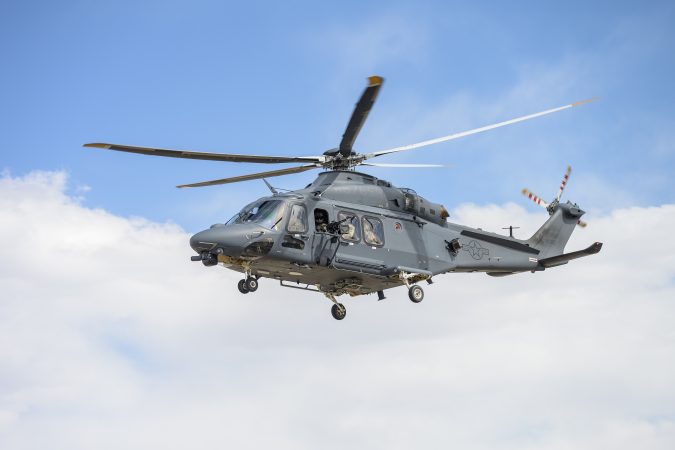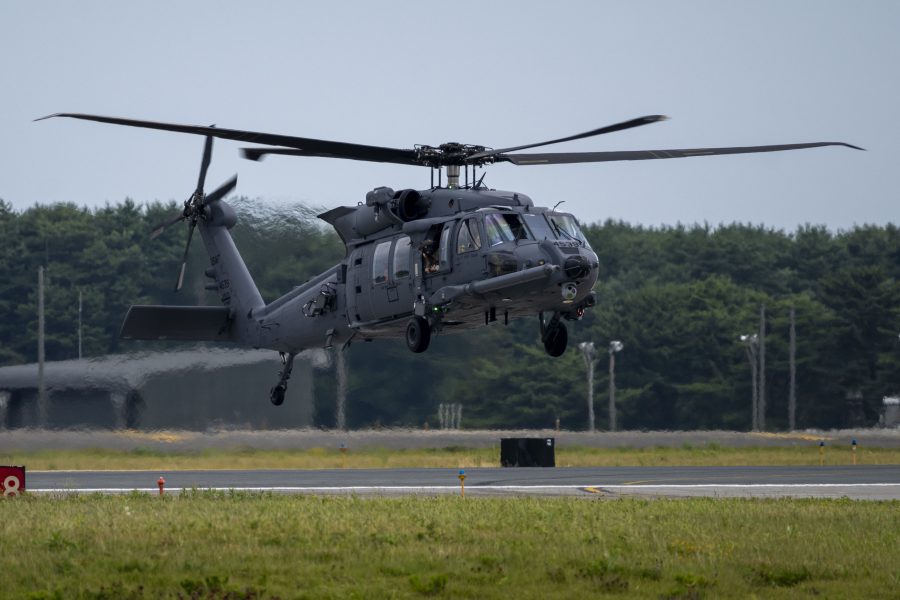The Air Force’s helicopter fleet gets a major shakeup in the 2026 budget, highlighted by a decision to modify HH-60W helicopters to ferry VIPs around Washington, D.C., according to budget documents and a spokesperson.
The modified “Whiskeys” would replace aging UH-1 Hueys now operating out of Joint Base Andrews, Md. The Air Force had previously planned to buy MH-139s for that purpose.
“It is more cost effective to modify previously procured HH-60Ws contained in back up inventory than to procure additional MH-139A aircraft,” an Air Force spokesperson told Air & Space Forces Magazine.
According to budget documents, the Air Force will use $15.1 million in supplemental funds plus additional “discretionary” funds to modify 26 HH-60Ws “to meet the Air Force District of Washington (AFDW) mission requirements.”
When asked where the HH-60s would come from and where they would be stationed, the spokesperson said only that “force structure and strategic basing decisions have yet to be determined.”
Modifying HH-60Ws suggests these helicopters will be repurposed away from their intended combat search and rescue mission, where the new Jolly Green IIs are supposed to replace older HH-60G Pave Hawks.
The Air Force chose the MH-139 for transporting security forces personnel across sprawling intercontinental ballistic missile fields.
Air Force helicopter plans have changed multiple times in recent years. The Air Force once planned to buy 113 HH-60Ws, but cut that total to 85 in its 2023 budget plan—including 75 production airframes and 10 test aircraft. Congress added funds for another 10 more aircraft in 2024 and four more in 2025, for a total of 89 production aircraft. USAF’s 2026 budget request confirms “funding is available to procure 100 aircraft,” including 11 test airframes.
The Air Force defines backup inventory as “aircraft above the primary mission inventory to permit scheduled and unscheduled depot level maintenance, modifications, inspections and repair and certain other mitigating circumstances without reduction of aircraft available for the assigned mission.” Pulling 26 HH-60s from the backup inventory would leave 74 to accomplish the core mission of search and rescue, close to the curtailed program of record.

Separately, the Air Force planned to buy 84 MH-139 Grey Wolf helicopters to patrol its nuclear missile fields, for senior leader and executive airlift in the National Capital Region, and aircrew survival training. That buy was also reduced, first to 80 aircraft, then to 42—including 36 production frames and six test units. Reduced buys meant limiting the MH-139 only for nuclear patrol missions, leaving the executive airlift mission uncovered. Now, the spokesperson said,” the MH-139A Program of Record is being increased to 56 aircraft.” When those additional aircraft are to be acquired is not yet clear.
UH-1Ns, which date back to the Vietnam War, cannot endure forever. Congress seemed to take aim at the issue in the recently passed reconciliation bill, directing $210.3 million for “the increased production of MH–139 helicopters.”
How that will unfold is also not clear. The Air Force spokesperson acknowledged that the legislation “contained funding to replace the AFDW UH-1s,” and that “the funding contained in the legislation is only for MH-139A production.” But the spokesperson added that the funds are “an enabler for the overall MH-139A-HH-60W plan.”
The Air Force plans to buy just two MH-139s in fiscal 2026—the program’s stated full production rate—but budget documents note plans to use $150 million in reconciliation funds regardless.
“In addition to procuring two aircraft, the combined discretionary and reconciliation funds support the broader, long-term costs associated with sustaining and operating the MH-139A fleet,” the spokesperson said.
Also unclear is what modifications are needed to convert the HH-60W Jolly Green IIs into senior leader and executive airlift. The Jolly Green II and Grey Wolf are quite different. The HH-60W is longer, has a wider rotor and can be refueled in transit. Its interior layout and equipment is optimized for search and rescue.


